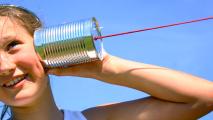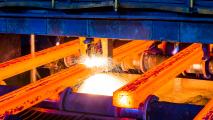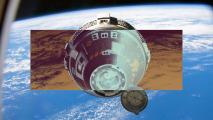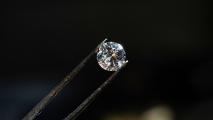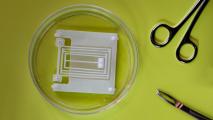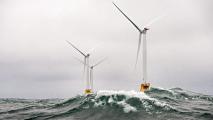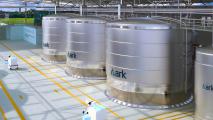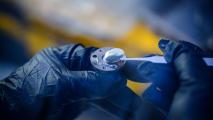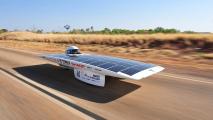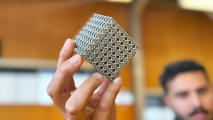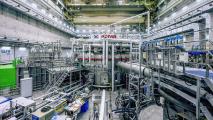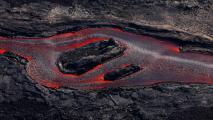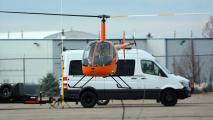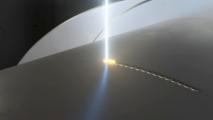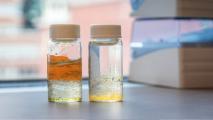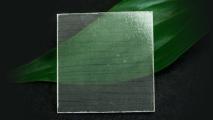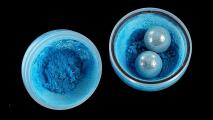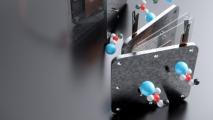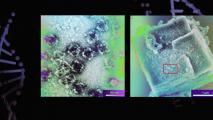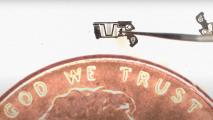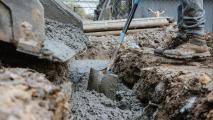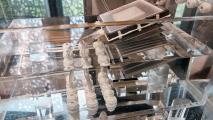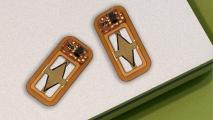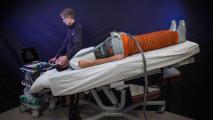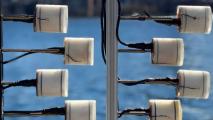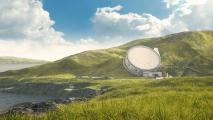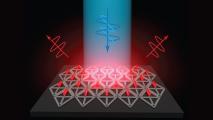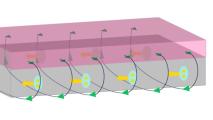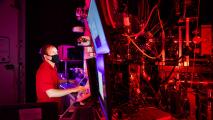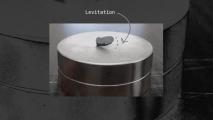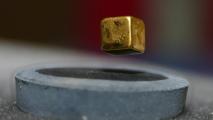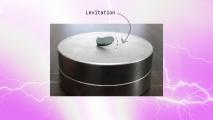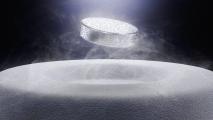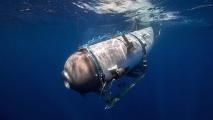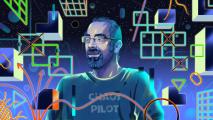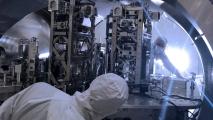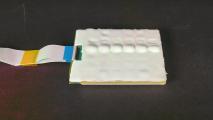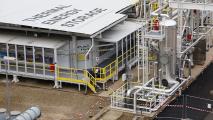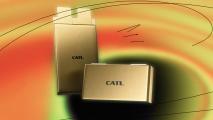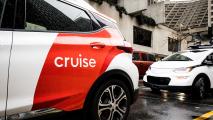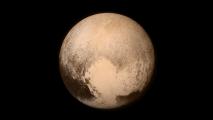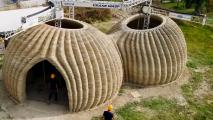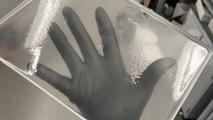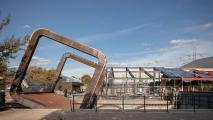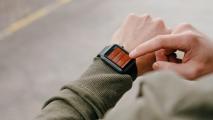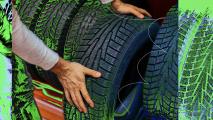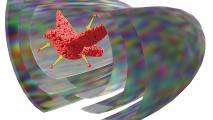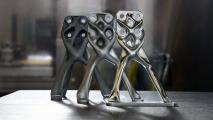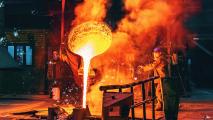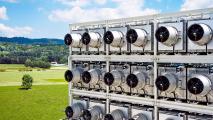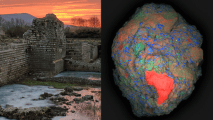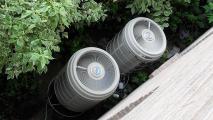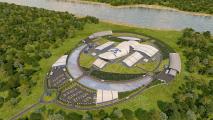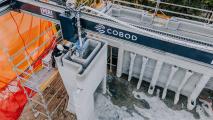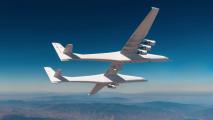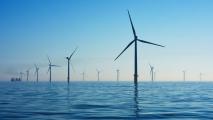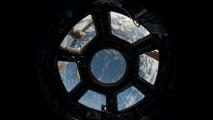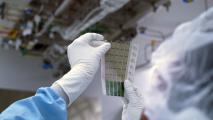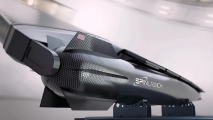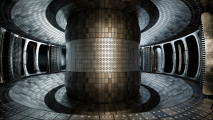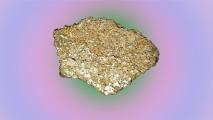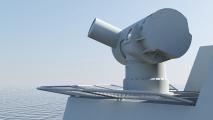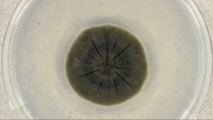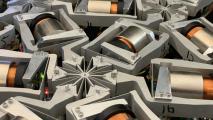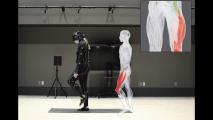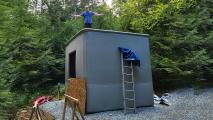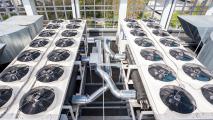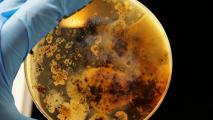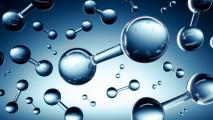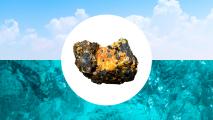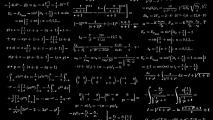Field: Engineering
The left–right twist that could rewrite tech
Scientists are harnessing chirality — the left- and right-handedness of molecules — to build better batteries, sharper displays, and more.
America’s path to maritime leadership is clear — but it demands urgency
America leads the world in aerospace, software, and clean energy. Here's how it can lead in maritime, too.
The Eiffel Tower was considered techno-dystopian
Before completion for the 1889 World’s Fair, the Eiffel Tower project was treated by some as an industrialist "Tower of Babel."
9 dumbphones to help curb your screen addiction
While smartphones keep getting more powerful, the growing dumbphone phenomenon is subverting expectations.
Which technologies will enable a cleaner steel industry?
Technologies like hydrogen-based direct reduction of ore, electrolysis, and advanced furnace technologies could reduce steel emissions.
Boeing’s Starliner spacecraft was set to launch on May 6 — but was delayed again
Boeing’s Starliner launch – delayed again – will be an important milestone for commercial spaceflight if it can manage to launch.
Synthetic diamonds may have just gotten way easier to make
Scientists in South Korea have developed a new technique for creating synthetic diamonds that works under ambient pressure.
MIT engineers design flexible “skeletons” for soft, muscle-powered robots
New modular, spring-like devices maximize the work of live muscle fibers so they can be harnessed to power biohybrid bots.
Six innovative ways to float skyscraper-sized wind turbines
While most offshore wind farms are firmly rooted in the seabed, engineers are developing new ways to float enormous wind turbines.
This startup is trying to solve lab-grown meat’s biggest problem
A biotech startup has developed a new kind of bioreactor that could help increase cultivated meat production.
Future nuclear power reactors could rely on molten salts — but what about corrosion?
Proton irradiation decreases the rate of corrosion in certain metal alloys — potentially good news for promising nuclear power reactors .
Why aren’t there solar-powered cars?
There are a number of reasons why solar-powered cars aren’t an option for everyday travel, at least not yet.
3D-printed “metamaterial” is stronger than anything in nature
Australian scientists used an advanced 3D printing technique to create a super strong, super lightweight new “metamaterial.”
Artificial reef designed by MIT engineers could protect marine life, reduce storm damage
An MIT team is hoping to fortify coastlines with “architected” reefs engineered to mimic the wave-buffering effects of natural reefs.
Korea’s “artificial sun” sets nuclear fusion record
An upgrade to KSTAR, an “artificial sun” in Korea, enabled scientists to set a new world record in nuclear fusion.
“Stone wool”: lava-based material is more efficient, lasts longer than most insulation materials
Stone wool, a lava-based material, is more efficient and lasts longer than today's most common insulation materials.
Expert explains why a nearly new Boeing 737 MAX 9 door flew off
A 60-pound “door plug” blew out from a nearly new Boeing 737 MAX 9 in flight at 16,000 feet, leaving a gaping hole in the fuselage. Why?
Safer skies with self-flying helicopters
Engineers start with an existing helicopter model and add control, sensing, and other software systems to make it autonomous.
How electron beams could jumpstart the nuclear industry
Electron beam welding could accelerate manufacturing of small modular reactors, helping make nuclear power a part of our clean energy future.
A new way to swiftly eliminate micropollutants from water
Scientists at MIT are using zwitterionic hydrogels to sustainably capture both organic and inorganic micropollutants from water.
New graphene semiconductor could revolutionize electronics
The first working graphene semiconductor outperformed silicon, suggesting that the supermaterial could be the future of electronics.
Gallium: The liquid metal that could transform soft electronics
By harnessing the unusual properties of a liquid metal called gallium, scientists could create a new generation of flexible devices.
Why scientists are making transparent wood
Stronger than plastic and tougher than glass, the transparent wood is being exploited for smartphone screens, insulated windows, and more
Grinding scientists: Mechanochemistry could revolutionize the creation of new materials
Like a kitchen mortar and pestle, mechanochemistry harnesses ball milling to create chemical compounds, simpler, and faster than traditional methods.
MIT physicists turn pencil lead into “gold”
MIT physicists have metaphorically turned graphite, or pencil lead, into gold by isolating five ultrathin flakes.
Engineers develop an efficient process to make fuel from carbon dioxide
MIT engineers developed a process that directly converts carbon dioxide into formate, a solid fuel that can be stored indefinitely.
“Iron Man” material made from DNA and glass is 4x stronger than steel
Using only DNA and glass, researchers made a material four times stronger and five times lighter than steel. It was inspired by Iron Man.
From a five-layer graphene sandwich, a rare electronic state emerges
When stacked in layers in a rhombohedral pattern, graphene takes on a rare state that could advance powerful magnetic memory devices.
Ex-NASA engineer Mark Rober created the world’s smallest Nerf gun — from DNA
Mark Rober and Pallav Kosuri created a Nerf gun so tiny they had to build it out of DNA. This DNA "origami" has the potential to revolutionize engineering.
Cleaning up one of the world’s most commonly used substances
C-Crete has created a more sustainable cement binding material that could significantly reduce the industry’s CO2 emissions.
Desalination system could produce freshwater that is cheaper than tap water
Engineers are aiming to turn seawater into drinking water with a completely passive, solar-powered device that is inspired by the ocean.
An implantable device could enable injection-free control of diabetes
MIT engineers designed an implantable device that carries islet cells along with its own on-board oxygen factory to keep the cells healthy.
Spending time in space can harm the human body − but scientists are working to mitigate these risks before we go to Mars
With NASA planning more missions to space in the future, scientists are studying how to mitigate health hazards that come with space flight.
Device offers long-distance, low-power underwater communication
Researchers create a device with piezoelectric transducers that enables battery-free underwater communication.
SpinLaunch will hurl payloads into orbit, cutting the cost of launch by 20x
Rockets are big because they require enormous amounts of fuel. SpinLaunch’s method does away with much of that by hurling payloads into space.
Arrays of quantum rods could enhance TVs or virtual reality devices
MIT engineers have used DNA origami scaffolds to create structured arrays of quantum rods, which could be incorporated into LEDs.
Simple superconducting device could dramatically cut energy use in computing
Scientists have created a simple superconducting device that could transfer current through electronic devices much more efficiently.
Scientists see metal heal itself for the first time
The first example of metal healing itself, repairing tiny cracks caused by metal fatigue, could lead to an engineering revolution.
Termite mounds inspire climate-friendly air conditioning
The intricate designs of termite mounds show how to maintain a comfortable climate, without using any power.
We’re in a “fog of war” as experts and amateurs rush to replicate superconductor LK-99
A group of Korean scientists are claiming the first superconductor that works in our everyday environment. Is it real?
Ask Ethan: Is LK-99 the holy grail of superconductors?
The holy grail of superconductor science is to find a superconductor at room temperature and standard pressure conditions. Is LK-99 the first?
Scientists rush to recreate room-temperature superconductor
Claims that a material called “LK-99” is a room-temperature superconductor are being put to the test by the scientific community.
Viral room-temperature superconductor claims spark excitement
South Korean researchers claim they've created a material capable of room-temperature superconductivity, a holy grail of science.
Innovation chief says “pressure test” your pet hypothesis. It’s guaranteed to be wrong.
His grandfather, a member of Oppenheimer’s atomic bomb team, foresaw the potential of nuclear energy to power cities – not destroy them. Today, Astro Teller is on a mission to harness innovation for good. Here’s how he’s doing it.
How the world’s most sensitive yardstick reveals secrets of the universe
When two massive objects – like black holes or neutron stars – merge, they warp space and time. Here's the tool that measures the resulting waves.
Ancient technology that was centuries ahead of its time
These forward-thinking inventions are often called "ahead of their time." They are reflections of the ingenuity of their civilizations.
Watch the world’s largest plane drop a hypersonic aircraft
Aerospace company Stratolaunch has dropped a hypersonic aircraft from its record-breaking Roc launch platform for the first time.
New tech creates liquid buttons on touchscreens
Carnegie Mellon researchers want to return a sense of touch to touchscreens.
World’s first thermal energy storage “gigafactory” opens
Israel’s Brenmiller Energy has opened what is believed to be the first thermal energy storage gigafactory in the world.
Battery density breakthrough could be enough to power electric planes
CATL, the largest manufacturer of EV batteries in the world, has announced a new super powerful one — but details are light.
Cruise driverless cars can now operate 24/7 across San Francisco
GM-backed Cruise has announced that it can now operate its driverless car service 24/7 in San Francisco.
Astronomers have directly detected a massive exoplanet. The method could transform the search for life beyond Earth.
There are many techniques to search for planets orbiting other stars. Perhaps the simplest of these is called direct imaging, but it's not easy.
The paper plane world record has been shattered
Boeing engineers who grew up folding paper planes at family days have broken the distance flight record.
NASA’s Habitable Worlds Observatory to finally answer the epic question: “Are we alone?”
The Nancy Roman Telescope is already being built with a goal no smaller than to find inhabited planets beyond Earth.
We used to have steam-powered cars. What happened to them — and will they come back?
Steam cars went extinct because gas-powered cars became far more convenient. Will technology ever bring back the steam car?
3D printing promises to transform architecture forever
Large-scale additive manufacturing, like 3D printing, involves building objects one layer at a time, transforming architecture as we know it.
Researchers turned superglue into a recyclable, cheap, oil-free plastic alternative
Researchers discovered a way to turn superglue into strong, clear plastic that can be made into many shapes.
Watch: London’s “rolling bridge”
London’s unique Cody Dock “rolling bridge” can be moved by hand winches.
Batteries not included: How your own body could power wearables
Batteries are the weak link for wearable and implantable devices. But what if you could harvest energy from the heat, sweat or vibrations of the wearer?
Could 3D printing help solve the US housing crisis?
3D printing could help solve the nation’s housing crisis, as it's cheaper, faster, and more sustainable than conventional construction methods.
Goodyear announces 90% sustainable tire
Made from a variety of recycled and repurposed materials, the tire may be perfectly suited for electric vehicles.
Coastal cities created 40 Manhattans’ worth of new land since 2000
The first global assessment of land reclamation found that people have added 900 square miles of land to Earth’s coasts this century.
German scientists 3D print objects with “acoustic holograms”
By using shaped ultrasound, researchers in Germany have developed a way to 3D print objects in one shot.
NASA’s new balloon-borne telescope was designed with AI
An AI-powered technique called “generative design” is helping NASA engineers design better hardware, more quickly.
World’s biggest direct air capture plant is trapping CO2 in Iceland
Direct air capture technology is starting to take off, with ever-larger CO2 removal facilities opening across the globe.
Cosmic dust from Venus is inspiring new air pollution-busting technology
Inspired by chemistry observed on the surface of Venus, researchers produced a synthetic material that could improve air quality.
Ancient mystery solved: Why was Roman concrete so durable?
How have Roman walls held up so long? Their ancient manufacturing strategy may hold the key to designing concrete that lasts for millennia.
How heat pumps of the 1800s are becoming the technology of the future
With ever-improving efficiencies, and rising sales in multiple countries, heat pumps are only getting harder for their detractors to dismiss.
First small modular nuclear reactor certified in US
The US’s first certification of a small modular reactor design could lead to cheaper, safer nuclear power plants.
Two-story 3D-printed house is first of its kind in the US
The US’s first two-story 3D-printed house is being built in Houston, Texas, from a mix of concrete and wood.
World’s largest plane sets new flight record
A new test flight puts the world’s largest plane one step closer to helping the US develop — and respond to — hypersonic weapons.
This Swedish start-up is building an electric airliner
A Swedish startup has joined the race to build the world’s first electric airplane to help reduce the carbon impact of flying.
How do floating wind turbines work?
Several full-scale demonstration projects with floating wind turbines are already operating in Europe and Asia. How do they stay afloat?
China’s new space station is open for business
On Nov. 29, 2022, the Shenzhou 15 mission launched from China’s Gobi Desert carrying three taikonauts – the Chinese word for astronauts.
Paper-thin solar cell can turn any surface into a power source
MIT researchers have developed a scalable fabrication technique to produce ultrathin solar cells that can be stuck onto any surface.
Will physics prevent SpinLaunch from succeeding?
SpinLaunch has a working prototype successfully launching objects at 1,000 miles-per-hour, but will the laws of physics stand in the way?
Extra-salty lithium battery less likely to catch fire
Stanford researchers have developed a battery electrolyte that can allow lithium-ion batteries to operate safely at much higher temperatures.
Here’s what that fusion power breakthrough really means
This year, NIF reports that it has achieved "ignition" — that is, it has achieved slightly more fusion energy output than laser energy input.
A green trifecta: how a concrete alternative can cut emissions, resource use, and waste
Building materials and construction generate about 20% of global greenhouse gas emissions. What if there was an alternative?
This meteorite material could power our clean energy future
A lab-made version of tetrataenite, a mineral found in meteorites, could replace rare earth elements in the production of permanent magnets.
UK test-fires its first high-energy laser weapon
The UK has successfully test-fired the $115 million DragonFire, its first high-powered, long-range laser weapon.
Chernobyl fungus could shield astronauts from cosmic radiation
A recent study tested how well the fungi species Cladosporium sphaerospermum blocked cosmic radiation aboard the International Space Station.
A new material called a mechanical neural network can learn and change its physical properties
The new material’s architecture is based on that of an artificial neural network – layers of interconnected nodes that can learn to do tasks.
New VR body suit lets you see inside your body while you exercise
A system for monitoring motion and muscle engagement could aid the elderly and athletes during physical rehabilitation.
How to prevent mass extinction in the ocean using AI, robots, and 3D printers
There is currently no possibility of the world reaching the 30% target for marine protected areas with existing policies. Tech to the rescue?
Is ancient technology better than modern air conditioning?
Wind catchers — an ancient technique to beat the heat — could help us once more in our quest for emissions-free cooling.
Startup builds “inflatable” concrete houses in just hours
Automatic Construction can erect a concrete house in less than two hours thanks to a new technique involving inflatable fabric molds.
New MIT system could cool buildings up to 10℃— without electricity
MIT’s new “passive cooling” system could break the spiral of more air conditioning.
Genetically engineered bacteria make living materials for self-repairing walls and cleaning up pollution
With just an incubator and some broth, researchers can grow reusable filters made of bacteria to clean up pollution and more.
Electric planes are coming: Short-hop regional flights could be running on batteries in a few years
Aerospace engineer Gökçin Çınar discusses sustainable aviation concepts, including hybrid-electric planes and hydrogen fuel alternatives.
Inventions that are fighting the rise of facial recognition technology
Combating the rise of facial-recognition technology, designers have created clothing and accessories to help to conceal people's identities.
Brick batteries may be a key to decarbonizing heavy industry
By storing renewable energy as heat in brick “batteries,” Rondo Energy believes they can decarbonize heavy industry.
The surprising history of how electric vehicles have played the long game and won
The electric vehicle’s environmental credentials might give them a final push to win the long game over traditional cars.
This startup wants to build a radically powerful new kind of wind turbine
Norwegian startup World Wide Wind wants to build offshore wind turbines based on a completely different design from traditional models.
New solar device can pull hydrogen straight from the air
Researchers have created a solar-powered device that can pull water from the air to create hydrogen.
Electric school buses are taking students back to school
Can electric school busses bring cleaner air and lower maintenance costs to school districts across the country?
Researchers have found a way to pull more than 95% of uranium from seawater
Seawater contains millions of tons of uranium, but it’s too expensive to extract. A new material may change that.
New algorithm aces university math course questions
Researchers use machine learning to automatically solve, explain, and generate university-level math problems at a human level.



